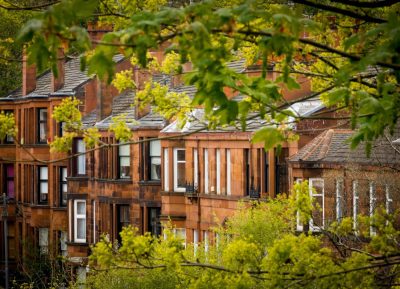Scotland, with its rich history and architectural heritage, is home to many buildings and areas that hold significant cultural, historical, or architectural importance. This has led to the designation of numerous properties as “listed buildings” and certain localities as “conservation areas”, especially in Scottish cities and surrounding burgh towns. If you’re considering buying, renovating, or even just curious about these special designations, it’s essential to understand what they entail.
What is a Conservation Area?
A conservation area is defined as an area of special architectural or historic interest where it’s desirable to preserve or enhance its character or appearance. Local authorities identify these areas, and the designation ensures that the unique character of these areas is upheld and any changes do not detract from their special interest.
Why are Conservation Areas Important?
The principal idea behind conservation areas is to manage and protect the special architectural and historic interests of a place. It doesn’t necessarily prevent development or change but ensures that any changes are done sympathetically and in a manner that complements the area’s unique character.
Listed Buildings Explained
On the other hand, a listed building is a structure that has been placed on one of the four statutory lists maintained by Historic Environment Scotland due to its architectural, historic, or cultural significance. There are three categories of listing:
- Category A: Buildings of national or international significance, either architecturally or historically.
- Category B: Buildings of regional or more local importance or major examples of a particular period, style, or building type.
- Category C: Buildings of local importance, lesser examples of any period, style, or building type, as originally constructed or moderately altered.
Implications for Property Owners
If you own a listed building or a property in a conservation area, there are certain responsibilities and restrictions you need to be aware of:
- Alterations and Repairs: Any alteration or demolition that would affect the character of a listed building or conservation area will require ‘listed building consent’ or ‘conservation area consent’ from the local planning authority. This is separate from any planning permission.
- Maintenance: Owners are expected to maintain the building in a manner that upholds its historic or architectural significance. Neglecting a listed building can result in enforcement action by the local authority.
- Grants: Sometimes, there are grants available for the repair and maintenance of listed buildings. These can be explored through Historic Environment Scotland or local councils.
- Insurance: Insuring a listed building can be more complex than insuring a non-listed property. It’s essential to inform your insurance company about the status of your property to ensure adequate coverage.
- Selling: When selling, you must inform potential buyers of the property’s listed status. The special character of the building can be an attractive feature for many buyers but also requires added responsibility.
Benefits of Owning a Listed Building or Property in a Conservation Area
While there are responsibilities that come with owning such properties, there are also undeniable benefits:
- Heritage Value: Owning a piece of Scotland’s rich history is a privilege. It offers a sense of continuity, bridging the past with the present.
- Unique Architectural Features: Listed buildings often come with unique architectural features not found in contemporary homes. This could range from intricate cornices to historic fireplaces or stained glass windows.
- Potential Value Appreciation: Due to their unique nature, these properties often appreciate in value over time, especially if maintained well.
- Community: Conservation areas often have active community groups passionate about preserving the local heritage. This can create a strong sense of community spirit and belonging.
In Conclusion
Owning a listed building or a property in a conservation area in Scotland is both a responsibility and a privilege. While there are certain constraints, the joy of living in a piece of history, appreciating its architectural nuances, and the potential for value appreciation often outweigh the challenges. If you’re considering such a property, ensure you’re informed and prepared to embrace the rich heritage it brings with it.















